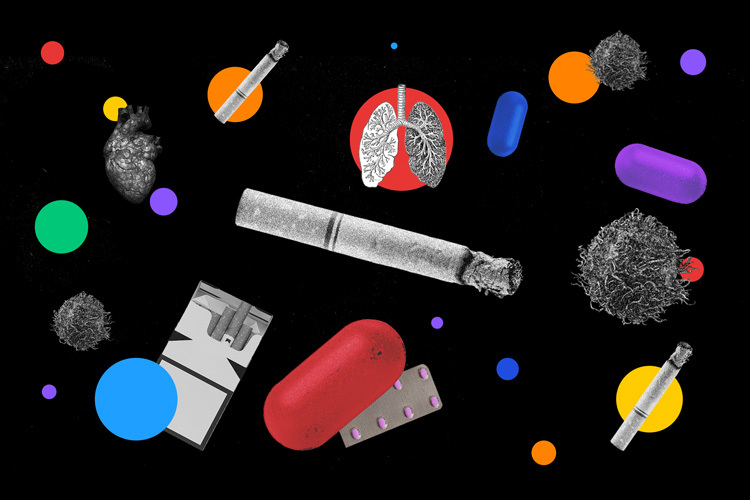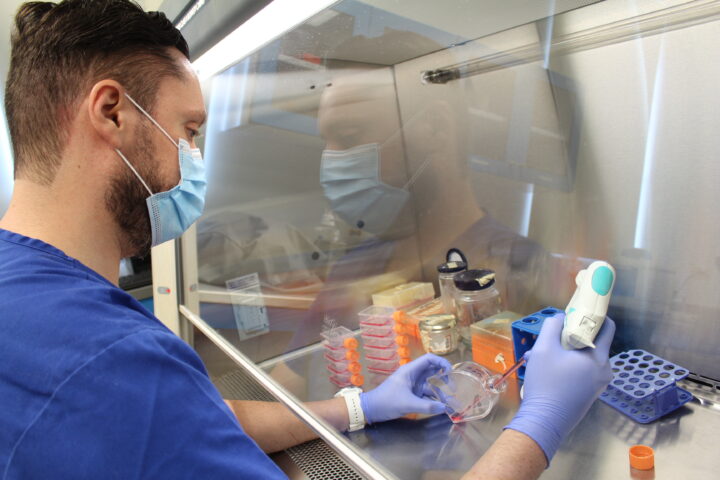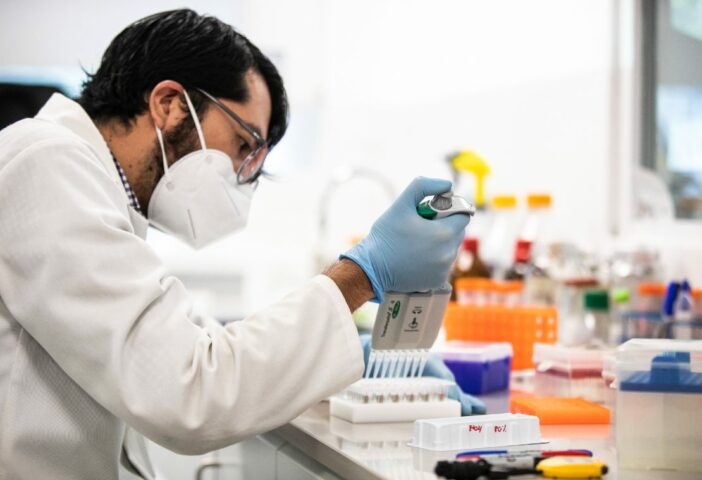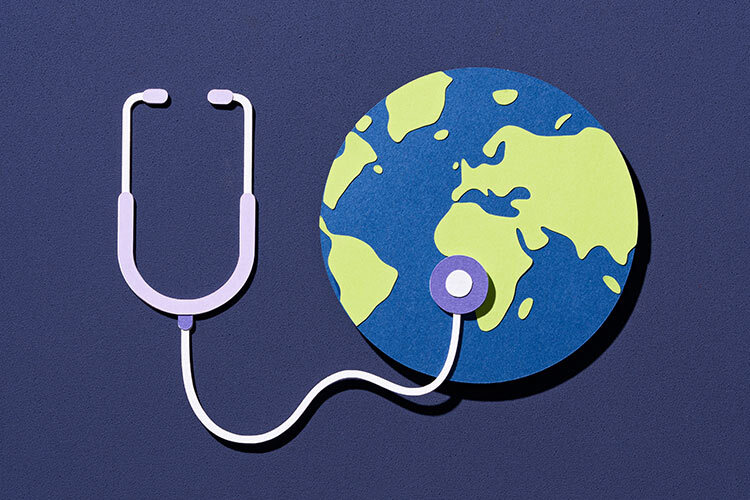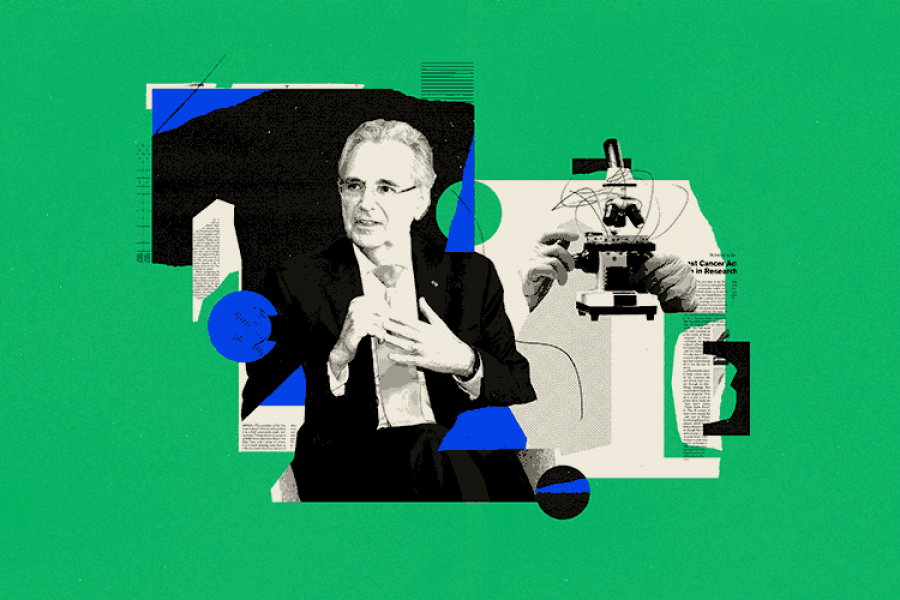A cigarette takes five minutes to be consumed. During that time, 7,000 chemical substances are inhaled, including 70 known to cause cancer. The consequences of smoking start immediately as these substances enter our bodies, passing through our mouths, lungs, and even affecting us psychologically, causing cellular damage and impacting our immunity. Over time, all these factors collectively harm health.
Upon inhalation, smoke starts a path into a lethal journey. In the mouth, nicotine –the addictive substance in tobacco– disrupts the environmental balance, and favors the colonization of bacteria, leading to tooth decay.
In particular, the tar it contains ruins tooth enamel. Microorganisms also get more opportunities to enter the gums, increasing the risk of gingivitis and severe periodontitis, which can lead to tooth loss.
Smokers are three times more likely to suffer from gum disease than non-smokers. Furthermore, dental treatments are less effective in smokers; for example, dental implants often fail.
The tobacco smoke contains substances like acetone, used in nail polish remover; acetic acid, found in hair dyes;, ammonia, a household cleaner; arsenic, rat poison; benzene, in rubber cement and gasoline; cadmium, a battery acid component and formaldehyde, used in embalming.
“The only way to avoid damage from smoking is not to smoke at all,” asserts Rachid Marcos Morales, a pulmonologist at Zambrano Hellion Hospital, Tecnológico de Monterrey.
Every year, eight million people die due to tobacco consumption. If current trends continue, between 2010 and 2050, there will be 400 million deaths associated with smoking. In 2020, 22.3% of the global population said they smoked, a practice that kills half of those who adopt it and never give it up.
The Impact on Lungs
Smoking causes irritation and constant inflammation. Rachid Marcos Morales, a specialist in bronchoscopy and interventional pulmonology, explains that smoke particles smaller than five microns reach deep into the lungs, the alveoli, where gas exchange occurs between the lungs and blood.
Tobacco smoke damages the alveolar walls, impeding proper gas exchange and reducing lung capacity. Persistent damage leads to Chronic Obstructive Pulmonary Disease (COPD) and, if it continues, emphysema, where the forced distension of tissue destroys the alveoli.
People with COPD and emphysema suffer from shortness of breath. In severe cases, minimal effort can cause suffocation, and rest might be disrupted because the respiratory rate drops as low as the brain reads this sign as an alert situation.
Chronic Inflammation
Constant exposure to smoke leads to chronic inflammation and stress in the body, forcing tissues to repair non-stop, which can cause errors in cellular repair. If chemicals damage DNA, cells can multiply abnormally, causing mutations and eventually cancer.
The lungs are the organs most affected during the five minutes a cigarette lasts, but not the only ones. Smoking accounts for at least 30% of cancer deaths.
It is associated with 17 types: small cell lung cancer, squamous cell lung cancer, lung adenocarcinoma, larynx, pharynx, oral cavity, squamous esophagus, esophageal adenocarcinoma, bladder, liver, stomach, acute myeloid leukemia, kidney, pancreas, ovary, cervix, and colorectal cancer.
Constant exposure to tobacco alters mucus production and quality, leaving the respiratory system with numb defenses and susceptible to new infections, as well as worsening pre-existing conditions like asthma.
Smokers are considered a high-risk population due to chronic inflammation, notes Guadalupe Ponciano Rodríguez, an addiction treatment specialist and academic at the Public Health Department of the UNAM School of Medicine.
Ponciano explains that inflammatory cells attract substances that can damage tissues, such as free radicals, which can bind to DNA and cause cellular damage. Ponciano points out that a smoker’s body spends a lot of resources repairing the damage from their addiction, neglecting other parts of the body. It’s like putting out a large, urgent fire while smaller ones are also burning.
For instance, to contain the free radicals circulating in organs and arteries from tobacco, the body uses up the antioxidant reserves meant for other functions.
According to the WHO, smokers have a life expectancy 10 years shorter than non-smokers. COPD and emphysema are incurable; “those lungs are permanently damaged,” says Morales. The best that can be done is to quit smoking to avoid further damage and live with the consequences.
Smoking also leaves long-term marks on our immune system. Scientists from the Pasteur Institute exposed blood samples from a thousand people to different microbes to observe their immune response by measuring cytokines, proteins the body releases in response to pathogens to regulate inflammatory reactions.
Among the study’s findings was that smoking leaves persistent changes in adaptive immunity, the body’s memory for fighting disease, for up to 15 years after the last cigarette.
“These results have potential clinical implications for the risk of developing infections, cancers or autoimmune diseases,” they note.
In other studies, an increased risk of developing other diseases has been established. The risk of presenting diabetes is up to 40% higher for active smokers than for non-smokers. It also worsens kidney problems and increases the risk of rheumatoid arthritis, cataracts, and macular degeneration.
The imbalance caused by quitting
“Just six seconds after a person takes a hit of tobacco, the brain is flooded with nicotine,” details Guadalupe Ponciano Rodríguez. Nicotine, she explains, is a small molecule capable of crossing the blood-brain barrier, a network of blood vessels and tissues that prevent substances from entering the brain. But nicotine reaches the alveoli, quickly enters the bloodstream, and reaches the brain.
Once there, it binds to nicotinic receptors, particularly those in the reward area.
Ponciano explains that these receptors are like a lock and nicotine is the key; when the locks are opened, dopamine is produced. This neurotransmitter provides a feeling of well-being that is usually produced by natural rewards, but drugs like nicotine maximize it.
That feeling caused by excessive dopamine is what hooks the smoker; every time he lights up a cigarette he seeks this effect.
What sounds good is actually a trap. Nicotine transforms the brain. The more nicotine it receives, the more receptors are created. In smoking, tolerance is determined by these receptors, and as dependence progresses, more and more doses are needed to obtain the effect that was previously achieved with a single cigarette.
And when quitting, the locks are left so thirsty that the brain feels this imbalance. The physical and mental discomfort it causes is known as withdrawal syndrome, and Ponciano emphasizes that this is why medical treatment and psychological support are recommended to quit smoking.
Nicotine also causes excess dopamine in the brain by decreasing the enzyme monoamine oxidase (MAO). One of MAO’s tasks is to clear the synaptic space by breaking down excess dopamine. “In the brain, we can’t allow chemical residues, the amounts must be exact.”
The scientist explains that if dopamine remains in the synaptic space, it’s like having the telephone line (from neuron to neuron) busy.
Once it reaches the blood…
Through the alveoli, carbon monoxide enters the circulatory system, where it binds to hemoglobin, displacing oxygen and causing difficulty breathing.
Nicotine and other substances also use this route to disperse throughout the body. Smoking constricts blood vessels and damages the endothelium, the inner lining of veins and arteries; these effects together restrict blood flow.
It is estimated that after people smoke a cigarette, vasoconstriction in the body lasts about 10 minutes. If, in addition to smoking, a person follows a high-fat diet, atheroma plaques form on the endothelium.
“It’s like stepping on a garden hose.” Together, this increases blood pressure, the risk of myocardial infarction, and stroke. People who smoke fewer than five cigarettes a day can show early signs of cardiovascular disease.
The blockages caused by smoking reduce blood flow to the arms, legs, and skin. Smoking hampers the body’s ability to recover from cuts; in diabetics, it further complicates wound healing. Regarding bones, women who are post-menopausal and smoke have weaker bones than those who have never smoked.
Are electronic cigarettes just as harmful?
In addition to nicotine in different concentrations, Ponciano points out, the liquid in e-cigarettes contains sweeteners, propylene glycol, ethylene glycol and glycerin, among other things.
The mixture boils with the battery and releases an aerosol of tiny particles, which is what is inhaled, not vapor as is often believed.
The problem with the fats they contain is serious. The academic explains that the respiratory system does not have the capacity to assimilate them, but that those of the electronic cigarettes are so small that they manage to reach the bottom of the respiratory system, there they find the macrophages, cells of the immune system that watch over the respiratory space, these cells eat the fat droplets and die.
Among other things, this can cause lipoid pneumonia.
Although other possible harms remain to be established, reports of severe lung disease from the use of these devices were published in 2019. Added to this is the harm caused by sweeteners added to the liquids and heavy metals released when e-cigarettes are heated.
Avoiding tobacco use is more than an individual choice; its damage goes beyond the smokers’ bodies. It is estimated that half of the world’s children breathe air contaminated by tobacco smoke. In Mexico, the National Health System spends about 116 billion pesos to treat diseases that could be prevented by implementing the WHO Framework Convention on Tobacco Control.
Did you find this story interesting? Would you like to publish it? Contact our content editor to learn more at marianaleonm@tec.mx
